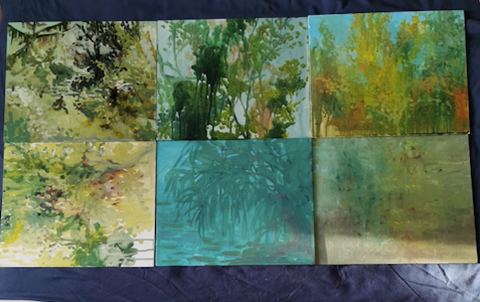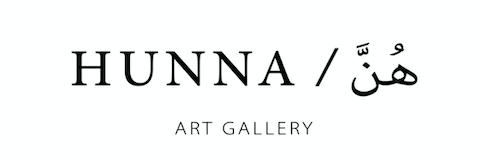In Oscar-Claude Monet house - a residency journal
When I first arrived to Vetheuil, I was taken away by the serenity and tranquility of this little town. I arrived at night, the road was completely empty and dark but made me curious and more excited to see the town in daylight. I started the first day with some supply shopping, a walk on the Seine and some studio preparation. I then went to paint ‘en plein air’. It strikes me that it was not easy to select what you want to paint without adding in a way or another some elements from your extended periphery of vision. The eye can focus on a spot, but the mind must be very focused in order to depict exactly what you see. For this reason, I decided to select elements which I wanted to depict like a lot of artists who paint from real life as opposed to a reference photograph or a sketch.

This this liberated me from the details and gave me more space to explore the atmosphere. To my surprise, I found that the way I framed my first plein air painting of this residency was quite unconventional as opposed to what I had imagined. I took an unconventional angle and focused on a tree that was on the edge of the river, the river was behind me while I turned to paint it. I depicted 200 degrees of the landscape on a relatively small canvas. I got neck cramps because I was painting on a slope, sitting backwards, and holding the painting with one hand and painting with another. So, I decided to go back to the residence which is only a couple of minutes away.

I then had a discussion with Fouzy and Clement and they told me the story of a master who had told his pupil/student something along the lines of “when looking at a scene, memorize what you see and then paint what you remember”. Now, not a student anymore, Fabienne Verdier continues to paint abstract impressions the way the Chinese master had taught her decades ago. I liked the advice that this Chinese master gave the artist and I decided to paint the rest of the landscape from my memory, and I did. I was surprised and in awe of my visual memory even if it was somehow fantasized. It surprised me that I painted the tree so well, (the weeping tree, is it called?) I painted this tree from memory and succeeded in depicting it quite closely because I remember thinking to myself, it looks like a woman’s body, and I immediately remembered the posture of that tree/woman.

After deciding I was going to do my first plein air session in Vetheuil, I remember sitting on the Seine contemplating the waves and reflections, the ducks, the random swan, the big, long boat transporting sand for some construction for a bigger Paris, the man fishing on his little boat, the trees in the distance, the leaves at my feet…
I didn’t only observe with my bare eyes, I also used the camera on my mobile device, an excellent Leica, supported with artificial intelligence that stabilizes images when objects, forms, compositions are being detected after zooming in into a frame. I used the device to look closely at the surroundings as though I was using binoculars. I followed a swan that suddenly appeared in my frame, I followed her back and forth as though I was looking at a person walking in a distance, I then discovered a painted horizon that was painted at the bottom of the dock that I wouldn’t have seen with my bare eyes.

I captured still images of the steady little waves that moved monotonously after the passing of the long-sand-transporting-boat. I captured that reflection that looked like an image printed difficultly, as though the printer lagged or something. It looks like the noise on TV that doesn’t have enough satellite reception. Somehow, the scene was a hybrid between classical and contemporary, and I liked that.

After the ‘plein air’ attempt, the painting from memory, and the studying photographs from the Vetheuil landscapes, I had a feeling I wanted to be more and more immersed in the patterns and color palette around me. I painted on different surfaces with different mediums. I painted a wallpaper roll with ink and pastels.
I painted on small canvas boards that kind of looked like thumbnails of landscapes in different light, with different ‘white balance’ on each one.


I also looked at subjects around me from a distance (outside my windows of my studio and my bedroom) but also up-close and zoomed in. Looking at landscapes from different points of view allowed me to create more interesting compositions and think of them covering the walls or wrapping a chair or covering a light source or concealing the floor.
I want to be in the landscape without a frame.

Noor Riyadh 2023
REFRACTED IDENTITIES, SHARED FUTURES
Four artists -Aidha Badr, Amna AlBaker, Mashael Alsaie and Talin Hazbar- have been selected for 'Refracted Identities, Shared Futures', the exhibition accompanying the 2023 of Noor Riyadh.
Held at the Riyadh art space in JAX District, this exhibition is curated by Neville Wakefield, formerly of MoMA PS1, Frieze Projects, and Desert X, alongside Maya Al Athel, who served as artistic manager of the festival in 2022.
Last year, the exhibition considered light as a signal of change, tracing the role light plays in shaping our perception of the world. For 2023, the show celebrates light as a flux, where artists as cartographers of light comprehend the dynamic nature of human and cultural identity amidst the shifting sands of time.
